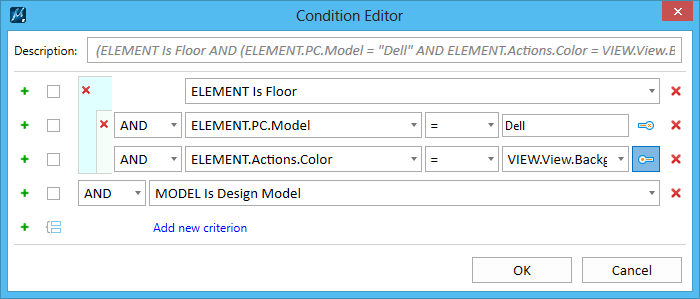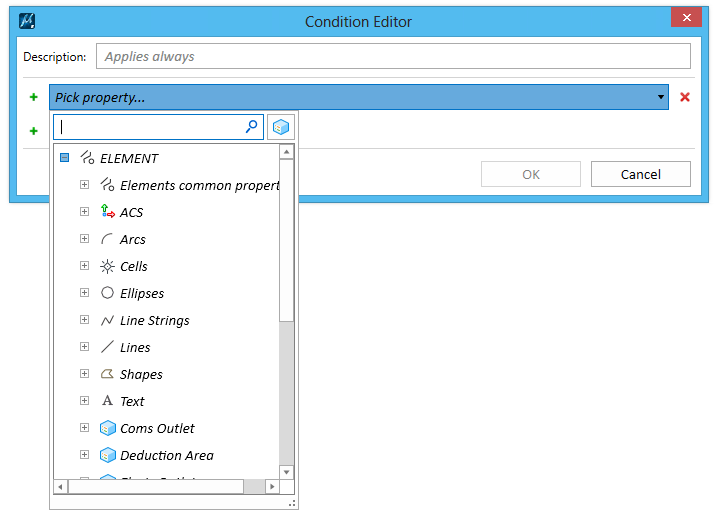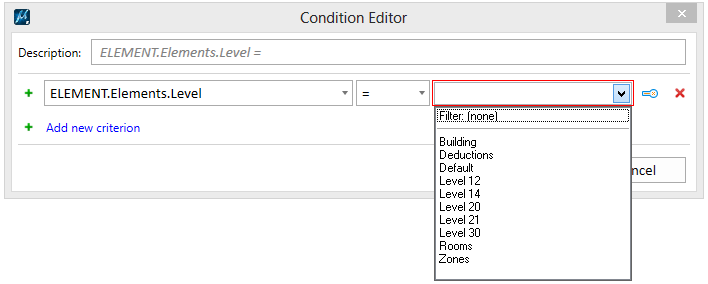Condition Editor Dialog
| Setting | Description |
|---|---|
| Description | Adds description to the condition. This description displays in the Condition cell in the Display Rules dialog's list box. By default, the description is the condition that you set. You can overwrite the default description. |
| Add new criterion |
Creates a new criterion. You can select a property from the picker next to the icon.
Clicking the drop-down list opens the following host property types:
Each host property type contains one or more types. These types depend on the content of file. For example, if your file contains design, drawing, and sheet models, the Model host property type lists all three model types. If your file contains only design models, the Model host property type lists only the design model. Expanding each type lists different categories of properties. Further expanding the categories, you get the list of properties. You can also search for a particular property using the Search field. Some properties called, struct properties contain nested properties. Such properties can be expanded to select the nested properties. Each type inside a host property type contains two special properties, namely, Is Type and Is Not Type. These properties define the condition whether the selected type is available or not available respectively. Depending on the property selected, additional drop-downs may be displayed for selecting comparison operators and setting the values or properties. For example, if you select the level property of an element, you will get two drop-down options. One will list the comparison operators and the other will list all the levels.
The comparison operator drop-down list has following special options:
|
| Show all available types | Lists all available types, including custom item types. |
| Toggle between value and property comparison | If on, you can add additional criteria to compare with the exiting criteria. If off, you can compare the existing criteria with a value. |
| Select multiple criteria to group | (Available only when you have three or more criteria in a condition) Allows you to select more than one criterion for grouping. |
| Group selected criteria | (Available only when you select two or more Select multiple criteria to group check boxes) Groups the selected criteria. For more details, see Criteria based grouping. |
| Delete criteria | Deletes the criteria. |








